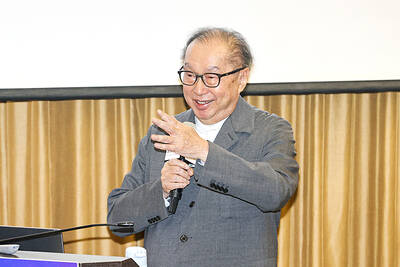Sporting a stylish knit hat, sunglasses and a heavy rapper-style chain, competitive snowboarder Wang Lei surveys the powdery slope with an expert's eye.
"I first discovered snowboarding on the television. I thought it was really cool," says the one-time member of China's military ski jump team, who since 2002 has worked on a professional snowboarding team run by Austrian apparel label Nivit.
But Wang doesn't train anywhere near the Austrian Alps.
He hits the slopes in Nanshan, located outside Beijing, and is part of a new generation of Chinese winter sports enthusiasts that equipment makers hope will generate big sales in years to come.
Ski season opened in China about a month ago, with skiers and snowboarders flocking to about a dozen stations on the weekends for a few days of carefree careening down the slopes -- albeit slopes covered with artificial snow.
Nanshan, a 10-slope village located 90 minutes by car from the Chinese capital, is -- like the others -- run by private owners looking to cash in on the latest fad to captivate the country's wealthy urban dwellers.
"The standard of living is increasing, and the Chinese also have more time now for leisure activities," explains Remigio Brunelli, who is working on a joint venture in China for Italian equipment manufacturing group Tecnica.
Some 2.5 million people nationwide have already braved the slopes, Brunelli says, but believes that the number could hit eight million by 2010.
In Nanshan, not everyone has achieved Wang's level of skill. Falls and accidents are common among the ski beginners, who pay up to 200 yuan (US$25) a day for the fun of it -- an exorbitant amount by Chinese standards.
In the past five years, the number of ski stations has been steadily on the rise. Most of them are located near Beijing, even though the mountains are not exactly towering giants.
With both the European and US ski markets totally saturated, industry professionals see China and its 1.3 billion people as the market of the future, despite brutally cold winter weather and the less-than-staggering altitudes.
"China will be a profitable market as soon as things are a bit more organized," predicts Richard Prothet, marketing director for the French ski equipment giant Rossignol, who has been monitoring China for eight years.
"All these little ski stations near Beijing are only open from December to March. It's hard to get a good return on investments."
Prothet says French-style villages -- which offer summer activities like hiking and mountain biking in order to remain open all year -- are the wave of the future for China.
"Twenty years ago, when I offered to work to promote skiing in China, people thought I was crazy. Today, I would be taken for a genius," says 52-year-old French ski instructor Bertrand Camus.
For the second season running, Camus has abandoned his post as a ski instructor in the posh French Alpine town of Courchevel for part of the season to help set up a ski school and train instructors in Huaibei outside Beijing.
But China's development as a ski destination could face political hurdles, as the government of President Hu Jintao (胡錦濤) has pledged to pursue economic growth that is both environmentally friendly and open to the masses.
The ski villages hardly fit that bill, given the high prices and the massive amount of water used to produce the mounds of artificial snow.
This summer, the Academy of Tourism Development at Beijing International Studies University slammed the ski resorts near Beijing, saying they each consumed the same amount of water as 42,000 people over the course of a year.
"Water is such a precious thing in Beijing. The people can live without skiing, but they can't live without water," the academy's deputy director Wang Fude said, demanding a nationwide end to ski resort development.

BYPASSING CHINA TARIFFS: In the first five months of this year, Foxconn sent US$4.4bn of iPhones to the US from India, compared with US$3.7bn in the whole of last year Nearly all the iPhones exported by Foxconn Technology Group (富士康科技集團) from India went to the US between March and last month, customs data showed, far above last year’s average of 50 percent and a clear sign of Apple Inc’s efforts to bypass high US tariffs imposed on China. The numbers, being reported by Reuters for the first time, show that Apple has realigned its India exports to almost exclusively serve the US market, when previously the devices were more widely distributed to nations including the Netherlands and the Czech Republic. During March to last month, Foxconn, known as Hon Hai Precision Industry

Taiwan Semiconductor Manufacturing Co (TSMC, 台積電) and the University of Tokyo (UTokyo) yesterday announced the launch of the TSMC-UTokyo Lab to promote advanced semiconductor research, education and talent development. The lab is TSMC’s first laboratory collaboration with a university outside Taiwan, the company said in a statement. The lab would leverage “the extensive knowledge, experience, and creativity” of both institutions, the company said. It is located in the Asano Section of UTokyo’s Hongo, Tokyo, campus and would be managed by UTokyo faculty, guided by directors from UTokyo and TSMC, the company said. TSMC began working with UTokyo in 2019, resulting in 21 research projects,

Ashton Hall’s morning routine involves dunking his head in iced Saratoga Spring Water. For the company that sells the bottled water — Hall’s brand of choice for drinking, brushing his teeth and submerging himself — that is fantastic news. “We’re so thankful to this incredible fitness influencer called Ashton Hall,” Saratoga owner Primo Brands Corp’s CEO Robbert Rietbroek said on an earnings call after Hall’s morning routine video went viral. “He really helped put our brand on the map.” Primo Brands, which was not affiliated with Hall when he made his video, is among the increasing number of companies benefiting from influencer

Quanta Computer Inc (廣達) chairman Barry Lam (林百里) yesterday expressed a downbeat view about the prospects of humanoid robots, given high manufacturing costs and a lack of target customers. Despite rising demand and high expectations for humanoid robots, high research-and-development costs and uncertain profitability remain major concerns, Lam told reporters following the company’s annual shareholders’ meeting in Taoyuan. “Since it seems a bit unworthy to use such high-cost robots to do household chores, I believe robots designed for specific purposes would be more valuable and present a better business opportunity,” Lam said Instead of investing in humanoid robots, Quanta has opted to invest